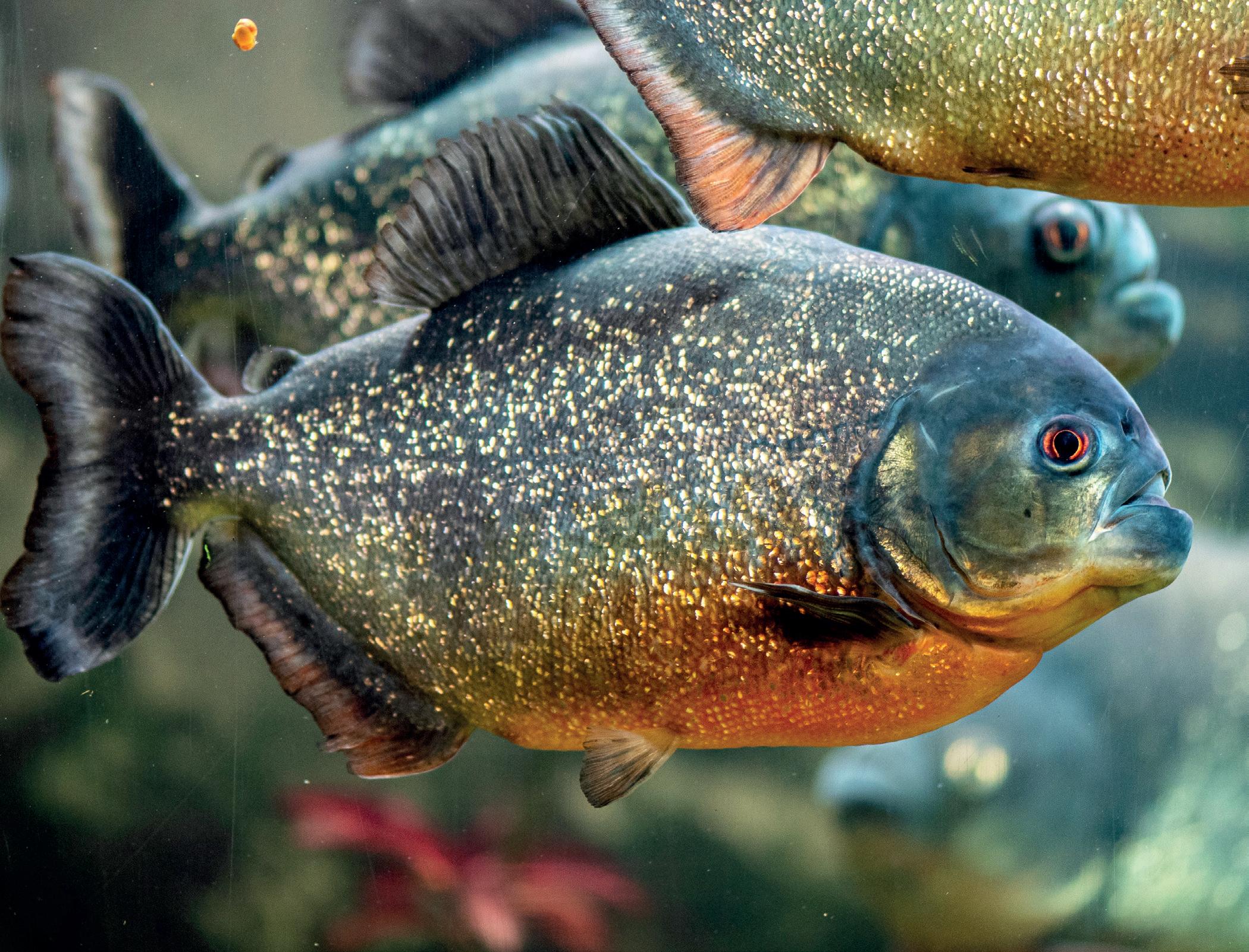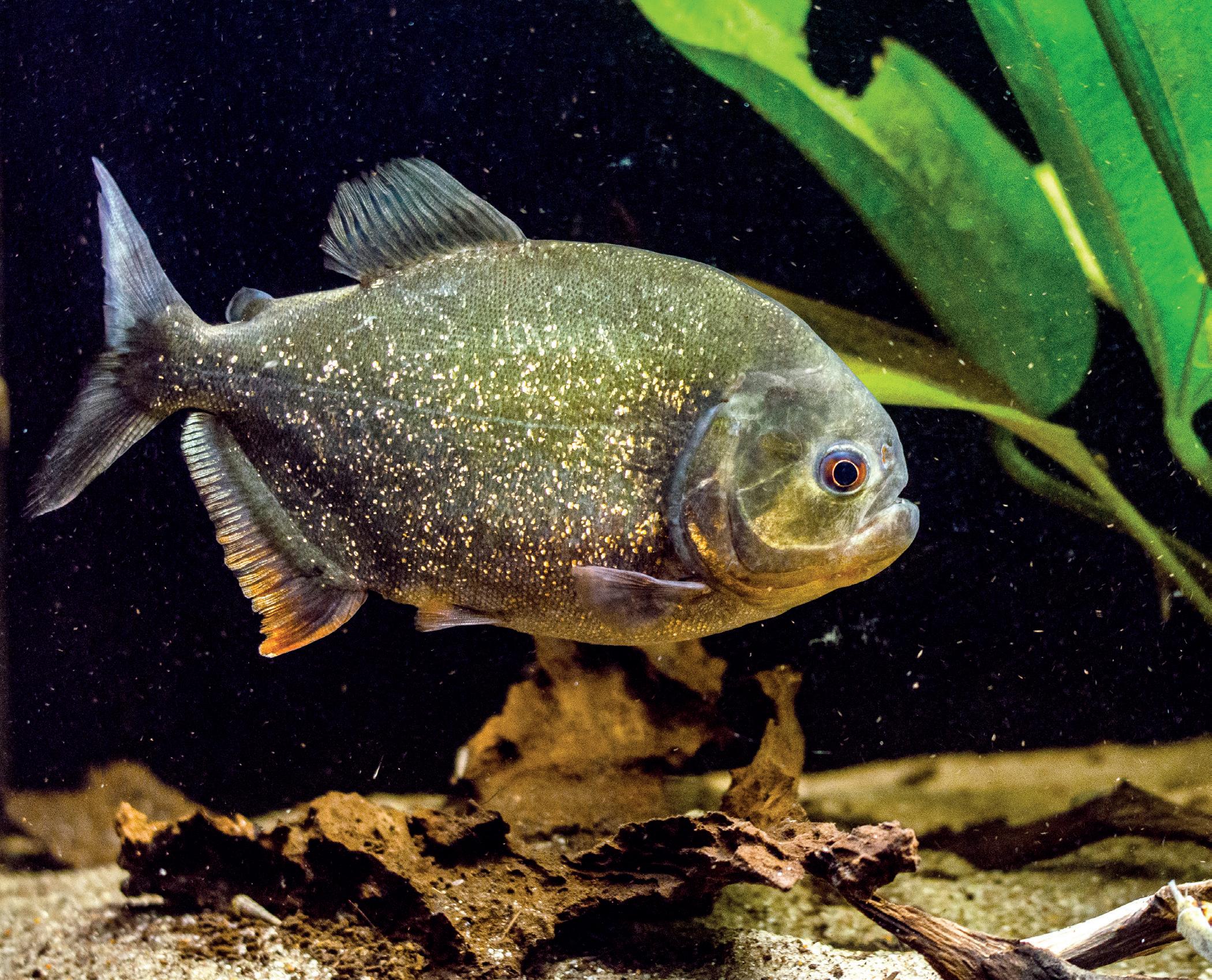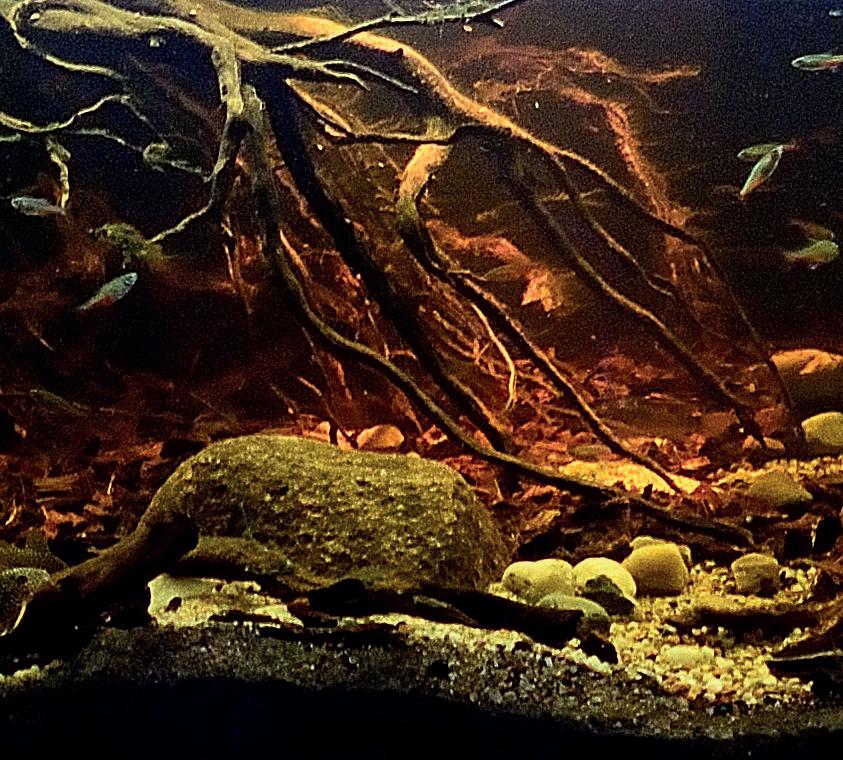
4 minute read
About piranhas in aquarium – and not only there (part 1) Paweł Czapczyk, PhD

Paweł CZAPCZYK, PhD
Advertisement
For nearly 40 years a passionate aquarium and terrarium hobbyist, writer, editor and breeder; organizer of exhibitions and conferences on aquarium and terrarium hobby; author of many books and press articles, as well as radio broadcasts and screenplays for documentary films; nature photographer, editor-in-chief of “Aquarium Magazine”.
In old stories of travelers who reached the queen of rivers, the Amazon, we can read about many brave wanderers who had the courage to venture deep into the Amazon basin and who were attacked by bloodthirsty piranhas.
In contemporary Hollywood B- or C-grade movies, mutant fish are usually a threat to the entire local area, terrorizing people on beaches or in swimming pools. The movie makers do not care much about reality, but they are right about one thing: the fish would have to be really mutated, because even the notorious red piranha (Pygocentrus nattereri) is a surprisingly timid species. It only becomes brave in a group. And that’s usually when a sudden but completely unexplained stimulus or impulse sweeps through the entire group. One of my friends is always surprised that when he is desludging his piranha-inhabited tank, the terrified fish try to escape or become invisible. They hide among the plants in the corners of the tank, cling in panic to the bottom and lie sideways on the sand.
INCREASING INCIDENCE After all, the need for fear is great in our society. Sensational reports about piranhas’ habitats far from their natal biotope and places where they can be ”hunted” are circulating the world, electrifying ichthyologists, anglers and aquarists. It was really surprising when in 1977 a stock of Serrasalmus rhombeus was discovered in the pond of an
Colossoma brachypomum


Pygocentrus nattereri
abandoned amusement park in the Miami area. Ichthyologists alarmed that the fish, most likely released by an extremely irresponsible aquarist, overwintered in Florida. Not to look far, in Europe the Czechs confirmed a piranha catch in the Oder River near Ostrava as early as 1998. After all, it is no wonder that the piranha is now included in some lists and atlases of animals occurring in the Czech Republic. And judging by journalistic reports and stories told by numerous witnesses and breathtaking adventures of anglers („Lord, what a fish it was!!!”), Poland today is a country where piranhas can often be caught without sophisticated lures (live bait and red worm). In 2006, the media reported that an angler caught a thirty-centimeter piranha in Lake Wonieść using a red worm. Within a year and a half it was the fourth officially reported case of catching a piranha in Wielkopolska. In nearly fifteen years, the number of public, semi-secret, and secret cases nationwide has increased significantly... Ichthyologists and fishermen alarm that thoughtlessly allowing predators and omnivores from the Amazon into Polish reservoirs is a violation of common sense, lack of imagination on the part of aquarists unworthy of the name, and above all, a violation of the law, i.e. exceeding the Act on the Protection of Native Species. For the most part piranhas are hardy fish and they adapt and acclimatize relatively easily to new types of water. Around the middle of the last century, these fish began to appear in the homes of American hobbyists. Soon after they spread to European aquariums…
A BIT OF SYSTEMATICS Piranhas or pirañas are now classified in the rank of the family Serrasalmidae, and less commonly the subfamily Serrasalminae. The piranha family today includes more than a dozen genera of freshwater fish that inhabit the tropical waters of South America. However, it is important to remember that new species and geographical varieties are still being discovered from time to time. Therefore, the systematics of this group is still subject to numerous discussions and revisions and the need for further genetic and anatomical studies is consistently indicated. Only some piranhas, especially from the genera Pygocentrus and Serrasalmus, are called ”proper piranhas”, and some people consider them – and only them! – to be really dangerous for humans. They are famous for their predation and group attacks on their prey. They are also able to eat mammals like a tapir or an ox down to the bone in a matter of minutes. However, other piranhas remain omnivores and even food opportunists, performing important sanitary functions in their home biotopes. Others are specialized herbivores. The popular tambaqui (Colossoma macropomum), which incidentally have a part of their dentition deceptively similar to that of humans, have adapted to splitting the hard shells of tropical fruits and seeds. Catoprion mento, commonly know as the wimple piranha, is counted among the so-called lepidophages, i.e. fish eating the fins and scales of other fish. Piranhas generally take care of their offspring – just like large American cichlids.
The rest of the article will be published in the next issue of our Tropical EDU Magazine.
Photos: Paweł Czapczyk
Pygocentrus nattereri






